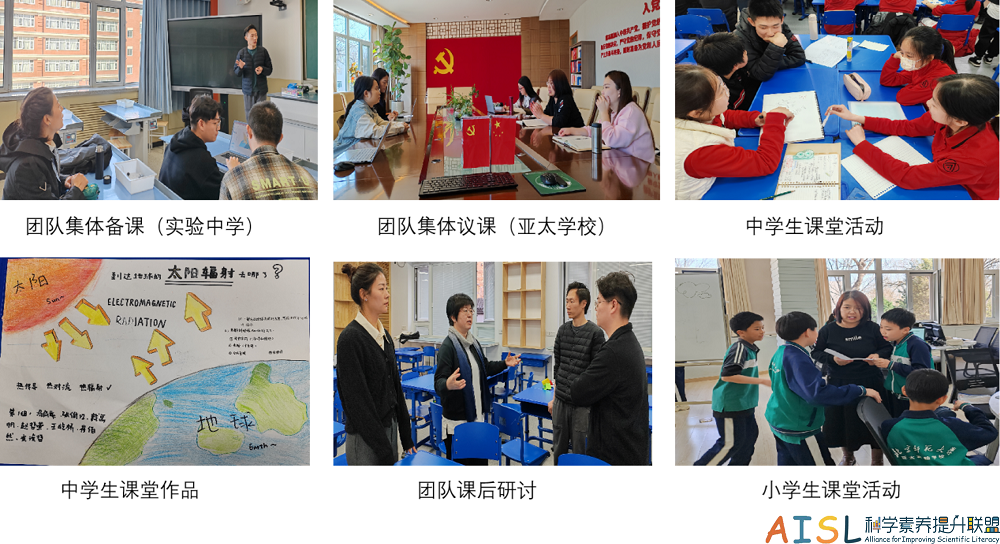2024年3月11日~3月24日,北京师范大学“社会性科学议题学习(SSI-L)”项目办在2所北京师范大学基础教育发展管理部“撷英计划”合作校,即北京师范大学附属实验中学、北京师范大学亚太实验学校,继续开展集体备课、课堂观察以及课后讨论等一系列教学研究活动。
这两周,以“全球变暖的机制”为抓手,2所合作学校教师带领学生探究科学建模的流程。课前,教师准备全球变暖相关情景视频和科学文献资料;课中,教师提出“全球为什么变暖”的问题,学生围绕问题,在原有概念认知的基础上,做出初步回答,接着,教师引导学生阅读文献资料,进一步思考全球变暖的原因;初步构建概念模型, 并在反思已建模型优缺点的基础上,补充完善细节。通过这些教学活动环节,项目组成员合力为学生创设讨论全球变暖机制的任务和活动,探索适合培养中小学生合作意识和批判思维的教学模式,分阶段循序渐进地实施SSI教学,不断改变课堂教学组织形式,为学生创造主动学习的机会。

From March 11th to 24th, 2024, the Beijing Normal University Socioscientific Issues-based Learning (SSI-L) Project office continued to carry out a series of teaching and research activities, such as collective course preparation, classroom observations, and after-class discussions, in two partner schools of the BNU Basic Education Development and Management Department’s Xieying Program — the Experimental High School Attached to Beijing Normal University, and the Asia-Pacific Experimental School of Beijing Normal University.
In the past two weeks, teachers from the two partner schools have taken “the global warming mechanism” as the focus and led students to explore the scientific modelling process. Before the class, teachers have prepared videos and science literature related to global warming. In class, teachers raised the question of “why does the planet get warming?”, and then students made preliminary responses to the question based on their prior conceptual knowledge. Next, the teachers would guide students to read through the literature and further think about the causes of global warming. After that they constructed the initial conceptual model, and supplemented and improved details of the model based on their reflection on the advantages and disadvantages of the established model. Through these teaching activities, the project team members worked together to create tasks and activities for students to discuss the mechanism of global warming. They have explored the teaching modes that are suitable for cultivating primary and secondary school students’ collaboration awareness and critical thinking. They implemented SSI-based teaching by stages and in a gradual way, and constantly adjusted the organizational form of classroom teaching, so as to create opportunities for students’ active learning.
